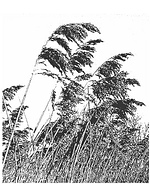Changes to Piermont Marsh Coming
In January, a draft of the Piermont Marsh Reserve Management Plan was released by NY State Department of Environmental Conservation and NY State Office of Parks, Recreation, and Historic Preservation/ Palisades Interstate Park Commission. Here is a condensed version of the report.
A permit was issued in April 2013 for the construction of a new Tappan Zee bridge. It included habitat restoration projects as mitigation for losses of habitat associated with bridge construction. Piermont Marsh was selected with focus placed on restoring native plant communities across the entire marsh by eradicating a non-native strain of Phragmites australis, a tall reed that has spread throughout the marsh. Residents expressed a range of views, among them the loss of marsh vegetation as a storm buffer and health and ecological impacts of planned herbicides on nearby residents and the marsh.
The Piermont Marsh Reserve extends over 1.5 miles. In recent decades, the Marsh has changed dramatically and the diversity of habitats, plants and animals it once supported is nearly gone. This plan will guide its management for the next decade, including habitat restoration, resource stewardship, public access and research to support marsh resilience and conservation.
Here are the agencies’ goals:
Maintain or enhance the Piermont Marsh Reserve’s ability to provide storm protection for neighboring landowners.
Sustain the presence of native marsh communities and the biological diversity they support.
Promote the structural and functional resiliency of the Piermont Marsh Reserve to storms, sea-level rise, and other disturbances.
Increase scientific knowledge, public understanding, and public use and enjoyment of the Piermont Marsh Reserve.
Piermont Marsh was mainly a high salt marsh community dominated by saltmeadow cordgrass, also known as salt hay. Today, its native community is all but gone. Most of the existing tidal marsh community is dominated by Phragmites australis, with underground stems that enable it to spread and form dense colonies. This plan provides for retention of 85% (over 200 acres) of this existing marsh community as a vegetation buffer to dissipate wave energy and filter storm debris.
The plan includes small-scale actions to restore native marsh communities and the fish and wildlife they support. A 10-acre site at the center of the marsh, more than one-half mile from neighboring residential areas, will be treated to reduce the abundance of Phragmites and facilitate the return of native plants. If this project is successful, then two adjoining 15-acre units will be treated over the next ten years to restore native ecological communities.
The total potential restoration is 40 acres, which represents 15% of the entire marsh. This is a substantial reduction from the original 200 acres identified as a habitat mitigation project in the 2013 permit.
Phragmites will be controlled with a combination of three techniques:
1) a limited ground-based application of a herbicide (an aquatic glyphosate formulation) and non-ionic surfactant;
2) mowing prior to treatment and again the following winter, with cuttings left in place to serve as mulch until treated areas naturally revegetate within 1-3 years;
and 3) solarization (covering with thick plastic) of the restoration area boundary that is not bordered by water to keep untreated plants from spreading into the treated area.


